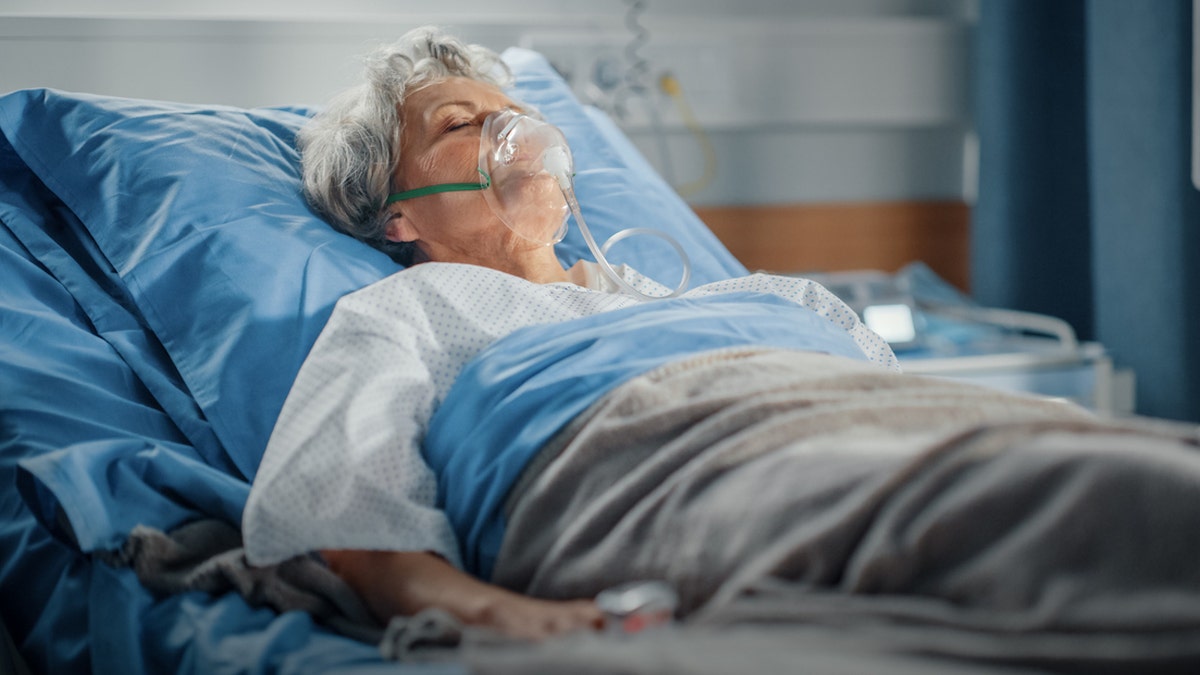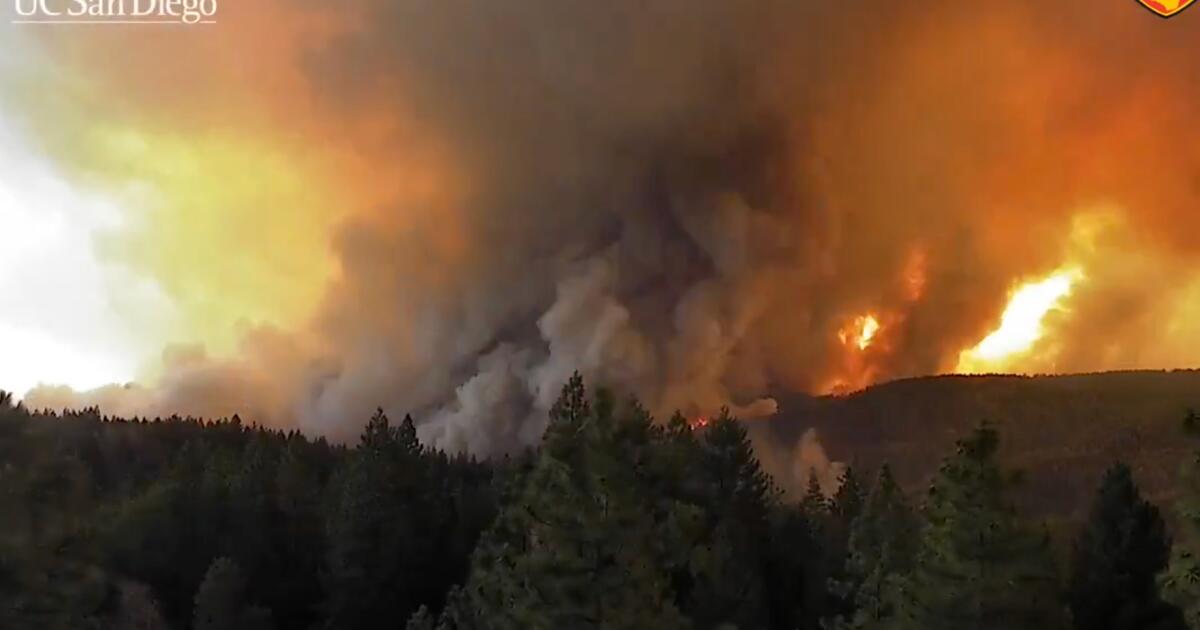World News
Pneumonia misdiagnoses are common among hospitalized adults, study finds: There are ‘implications’

Adults who are admitted to the hospital are often inappropriately diagnosed with — and treated for — pneumonia, new research suggests.
These misdiagnosed adults almost always receive a full course of antibiotics that may not be necessary, according to a new study published in JAMA Internal Medicine.
Among older adults who were treated for community-acquired pneumonia in the hospital, 12% were misdiagnosed, researchers found.
ANTIBIOTIC RESISTANCE IS ON THE RISE, DOCTOR WARNS: ‘THIS IS AN ENORMOUS PROBLEM’
Among those patients who were misdiagnosed, 88% received a full antibiotic treatment course — with 2% of those experiencing adverse side effects from the medication, the study also found.
The Centers for Disease Control and Prevention (CDC) estimates that about 47 million courses of antibiotics are prescribed annually in the U.S. for infections that don’t require that course of action.

Among older adults who were treated for community-acquired pneumonia in the hospital, 12% were misdiagnosed, researchers found. (iStock)
Overuse of antibiotics can lead to resistance, meaning that the bacteria becomes strong enough to withstand the medication.
Each year, over 23,000 deaths occur in the U.S. due to antibiotic resistance, per the CDC.
This can limit treatment options and make it more difficult for doctors to treat and cure infections.
Each year, over 23,000 deaths occur in the U.S. due to antibiotic resistance, per the CDC.
Main types of pneumonia
There are two primary types of pneumonia: community-acquired and hospital-acquired.
Community-acquired pneumonia (CAP) describes a type of pneumonia in a patient who has not recently been hospitalized.
In these scenarios, patients acquire the lung infection while in a community setting, according to the National Institutes of Health (NIH).

Overuse of antibiotics can lead to resistance, meaning the bacteria becomes strong enough to withstand the medication. (iStock)
Hospital-acquired pneumonia occurs after patients are admitted to the hospital.
They don’t have the infection when they’re first admitted, but acquire it later after being exposed to bacteria in the hospital setting.
Many patients with community-acquired pneumonia are treated without needing to be hospitalized.
Certain individuals with CAP, however, may require hospitalization if they have serious medical problems, severe symptoms, are unable to eat or drink, are over age 65, or are taking antibiotics but not improving, the NIH noted.
CAP is one of the most common causes of hospitalization in the U.S., according to the CDC.
What the study found
Researchers at the Veterans Affairs Ann Arbor Healthcare System and the University of Michigan Medical School – led by lead researcher Ashwin B. Gupta, M.D., clinical associate professor at the University of Michigan Health – examined patient records from the Michigan Hospital Medicine Safety Consortium, an initiative to improve the hospitalized care of patients.
Patients in the study were admitted to the hospital for general care and later were diagnosed with pneumonia and were treated with antibiotics on the first or second day of admission.
They analyzed approximately 17,000 adults who were hospitalized between July 1, 2017, and March 31, 2020, at 48 hospitals in Michigan.
Patients in the study were admitted to the hospital for general care and later were diagnosed with pneumonia and were treated with antibiotics on the first or second day of admission.
Participants were considered “inappropriately diagnosed” if they had fewer than two symptoms of pneumonia or if their chest X-rays tested negative for the infection. (In other words, if they got the diagnosis but didn’t have two symptoms or positive X-rays, the diagnosis was wrong.)

Patients in the study were admitted to the hospital for general care and later were diagnosed with pneumonia and were treated with antibiotics on the first or second day of admission. (iStock)
The study found that an inappropriate diagnosis of community-acquired pneumonia among hospitalized patients is common – especially among certain groups, such as older adults or those with dementia and altered mental status.
Those who were inappropriately diagnosed almost always received a full course of antibiotics, the researchers noted.
Common symptoms
A classic diagnosis of pneumonia involves typical symptoms — such as cough, fever, chills and shortness of breath — combined with radiographic evidence on a chest X-ray, according to experts.
HEALTH CARE IS ‘OVERWHELMINGLY COMPLEX’ FOR OLDER ADULTS, EXPERTS SAY: ‘EVER-INCREASING HURDLE’
The X-ray is necessary because many symptoms can overlap with other conditions.
“When you present to the hospital with cough or shortness of breath, for example, the list of potential etiologies is quite broad,” lead researcher Gupta told Fox News Digital via email.

A classic diagnosis of pneumonia involves typical symptoms — such as cough, fever, chills and shortness of breath — combined with radiographic evidence on a chest X-ray. (iStock)
“We found that often, those who likely have an underlying non-pneumonia etiology (e.g., congestive heart failure) are being classified as having pneumonia and are treated as such,” he continued.
“Inappropriate diagnosis and treatment of pneumonia may have implications, such as delays in understanding the actual problem or adverse effects related to antibiotic treatment.”
Dangers of unnecessary antibiotics
“Inappropriate diagnosis is not benign,” the lead researcher warned.
“It means that the understanding of the underlying cause of a patient’s illness may be delayed or missed altogether.”
He added, “Antibiotic therapy is not benign, either — our study demonstrated that full durations of antibiotic therapy in this population are associated with antibiotic-associated adverse events.”
“Inappropriate diagnosis … means the underlying cause of a patient’s illness may be delayed or missed altogether.”
Outside experts also warned of the risk.
“I think the study is alarming in that many patients (one out of eight, or over 10%) are receiving inappropriate diagnoses of pneumonia and being given full treatment courses,” Dr. Scott Roberts, associate medical director of infection prevention at Yale School of Medicine in New Haven, Connecticut, told Fox News Digital.
He was not involved in the study.

Common side effects of antibiotic use include an itchy, full-body rash; nausea and diarrhea; and yeast infections, according to the CDC. (iStock)
“This is especially problematic because the patient population where this is occurring are the ones most at risk for the adverse events associated with antibiotic use.”
Roberts emphasized the need for providers to diagnose conditions accurately before subjecting patients to full courses of antibiotics, which may be unnecessary and could lead to adverse side effects.
CLICK HERE TO SIGN UP FOR OUR HEALTH NEWSLETTER
Common side effects of antibiotics include an itchy, full-body rash; nausea and diarrhea; and yeast infections, according to the CDC.
Serious side effects may include life-threatening allergic reactions and a bacterial infection called C. diff (Clostridioides difficile), which can lead to severe colon damage and sometimes death.

A doctor emphasized the need for providers to diagnose conditions accurately before subjecting patients to full courses of antibiotics. (iStock)
“Diagnosis is challenging, and by and large, providers are trying to best care for their patients,” Gupta noted.
“We often think about problems related to underdiagnosis of conditions (e.g., missed infection), though there are real risks to inappropriate diagnosis as well,” he said.
Study limitations
The researchers likely underestimated the number of patients who were inappropriately diagnosed, as the signs and symptoms of pneumonia have significant overlap with other conditions, the researchers noted.
The study was also not designed to assess “causation,” Gupta pointed out.
CLICK HERE TO GET THE FOX NEWS APP
“So, while we can say that there is an association between a full duration of antibiotics and antibiotic-associated adverse events, we cannot say that a full duration of antibiotics caused the antibiotic-associated adverse events,” he continued.
He said he hoped that “this work will provide a framework on which providers, hospitals and health systems can calibrate the accuracy of their pneumonia diagnoses among hospitalized patients.”
World News
France travel disruption expected to last for days

French rail company SNCF has warned that disruption from Friday’s sabotage against the country’s train network could last until the end of the weekend and affect hundreds of thousands more passengers.
Coordinated arson attacks on three lines of the high-speed TGV network on Friday caused chaos for travellers, hours before the opening ceremony for the Paris Olympics. A fourth attack was thwarted by rail workers.
Prime Minister Gabriel Attal described the attacks as “acts of sabotage”.
About a quarter of international Eurostar trains were also cancelled, with UK Prime Minister Keir Starmer among those affected.
In a statement issued on Friday evening, SNCF said traffic “would improve” on affected lines on Saturday thanks to the work of thousands of rail workers.
It said:
- On the eastern line, trains would run normally from 06:00 (05:00 BST) on Saturday
- On the northern line, 80% of trains would be running, with delays of 1-2 hours
- On the south-western line, 60% of trains would be running, with delays of 1-2 hours
The company added that customers whose trains are delayed or cancelled will be contacted by email or text message.
Eurostar said it expected about a fifth of services over the weekend would be cancelled, while all trains would face delays of around 1.5 hours. Eurostar services use the northern high-speed line.
SNCF said surveillance of the rail network had been strengthened “on land and in the air,” using 1,000 workers and 50 drones.
Junior Transport Minister Patrice Vergriete said around 250,000 people had been affected on Friday, while up to 800,000 could face delays and cancellations by Monday.
He added that disrupting holiday travel, rather than Friday’s Olympic opening ceremony, was the most likely aim of the saboteurs.
“There is not necessarily a link” with the Olympics, he said in an interview.
Friday 26 July traditionally marks the start of the grand départ (big getaway) for many French holidaymakers heading out of the cities.
No group has yet claimed that it was behind the attacks. A source linked to the investigation told the AFP news agency that the operation was “well prepared” and organised by “a single structure”.
Mr Attal said security forces were searching for those responsible.
At around 04:00 on Friday, saboteurs cut and set on fire specialised fibre optic cables essential for the safe functioning of the rail network, government officials said.
One site was at Courtalain, 150km (93 miles) south-west of Paris. A picture posted online purportedly showed burnt-out cables in a shallow gulley with its protective SNCF paving stones discarded.
The SNCF spoke of a “massive, large-scale attack aimed at paralysing” its services, not just at Courtalain but at Pagny-sur-Moselle, a village outside the eastern city of Metz and Croisilles, not far from the northern city of Arras.
Another attempted attack in Vergigny, south-east of Paris, was foiled by SNCF workers who were carrying out maintenance on site in the early hours of Friday.
Prosecutors have opened an investigation into attacks on “the fundamental interests of the nation”.
World News
‘Firenado’ spotted above explosive Park fire near Chico

As the state’s largest wildfire of the year was doubling in size Thursday evening, explosive flames spun up into the atmosphere, swirling in a way that can only be described as tornado-like — a real life example of the firenado phenomenon.
Video of the massive fire whirl was captured by AlertCalifornia wildfire cameras, displaying the extreme fire behavior that is driving the massive and fast-moving Park fire across Butte and Tahoma counties.
The blaze has grown past 178,000 acres as of Friday afternoon, forcing thousands of evacuations and burning more than 100 buildings. Officials say the fire started Wednesday in Chico due to an act of arson.
“At this point, the fire is kind of creating its own weather, and that can be pretty unpredictable,” said Courtney Carpenter, a meteorologist with the National Weather Service in Sacramento. “Really big, explosive wildfires can create thunderstorms. They can make whirling fire plumes that can mimic tornadoes.”
Meteorologists tracked those massive, rotating smoke plumes on the radar Thursday night, Carpenter said, a characteristic of “explosive fire growth.”
She said the wildfire also generated thunderstorm clouds, but didn’t quite trigger lightning, which some particularly unstable fires have created before.
Watching the fire produce massive smoke rotations — and maybe even several vorteces — showed off the blaze’s rare and powerful nature, said Daniel Swain, a climate scientist at UCLA, on his YouTube channel. He said the Park fire had “super-cell thunderstorm-like characteristics.”
There is growing recognition that extreme wildfires can produce other dangerous phenomena that are not directly related to the flames alone, Swain said.
It’s not unusual to see fires modify their environment by causing localized wind currents, but large fires such as the Park fire can even start to “generate their own Mesoscale weather systems that look a lot like severe thunderstorms,” he said.
He added that new research is also finding that climate change is increasing the magnitude and frequency of such behavior, as well as bringing it to new regions.
“There is evidence that these large and potentially dangerous pyro-cumulonimbus events are increasing in a warming climate as fire intensity increases,” he said.
Carpenter said the weather service doesn’t issue tornado warnings when fire whirls develop because residents in the area should already be evacuated. More than 4,000 people have been issued evacuation orders from communities in and around northeast Chico and in parts of southern Tehama County.
“We urge people to follow the local orders from local officials,” Carpenter said. “Keep an eye on things and be ready to go if you live in the vicinity of the fire.”
World News
Donald Trump Seen in Public Without Ear Bandage
Donald Trump ditched his ear bandage for his meeting with Israeli Prime Minister Benjamin Netanyahu on Friday. The former president’s right ear returned to public life after being injured during the assassination attempt on the former president on July 13.
The former president’s large bandage became an impromptu fashion statement during the Republican National Convention with some attendees donning DIY wound dressings. Following the convention, Trump swapped out his bulky white gauze for a thin nude bandage.
Photos from Trump’s sit down with Netanyahu appear to show the former president’s ear intact without major scabbing or scarring. In one image, the former president points out the site of injury to the Israeli prime minister.
According to former White House physician Ronny Jackson, a bullet took the top of Trump’s ear off. On Wednesday, however, FBI Director Christopher Wray said that investigators did not know if the former president was grazed by a bullet or shrapnel during the shooting.
Jackson slammed the FBI Director in a letter posted on Truth Social in which he doubled down on his claim that Trump was struck by a bullet and said Wray was “wrong and inappropriate to suggest anything else.”
The former president’s campaign spokesperson also responded to Wray’s comments, calling his sworn testimony “conspiracy bullshit.”
Get the Daily Beast’s biggest scoops and scandals delivered right to your inbox. Sign up now.
Stay informed and gain unlimited access to the Daily Beast’s unmatched reporting. Subscribe now.
-

 African History5 years ago
African History5 years agoA Closer Look: Afro-Mexicans 🇲🇽
-

 African History6 months ago
African History6 months agoBlack History Facts I had to Learn on My Own pt.6 📜
-

 African History5 years ago
African History5 years agoA Closer Look: Afro-Mexicans 🇲🇽
-

 African History1 year ago
African History1 year agoMajor African Tribes taken away during the Atlantic Slave Trade🌍 #slavetrade #africanamericanhistory
-

 African History1 year ago
African History1 year agoCameroon 🇨🇲 World Cup History (1962-2022) #football #realmadrid #shorts
-

 African History6 months ago
African History6 months agoBlack History Inventors: Mary Kenner 🩸
-

 African History1 year ago
African History1 year agoNo African pre-Columbus DNA? 🤯🤯 #history #mesoamerica #mexico #african
-

 African History1 year ago
African History1 year agoOrigin Of ‘Cameroon’ 🇨🇲😳#africa























